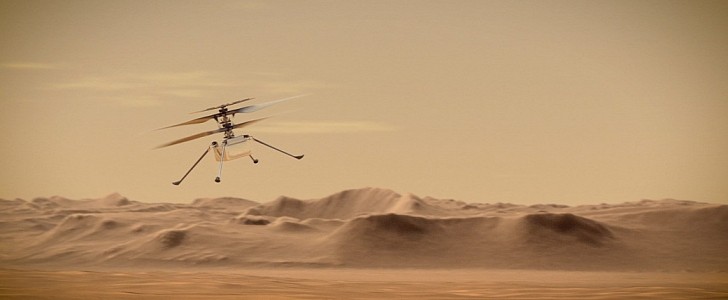On April 19th, NASA's Ingenuity helicopter spun its blades for the first time, successfully taking to the skies in the thin atmosphere of Mars. It was the first time when an Earth-made aircraft flew on another planet. Months have passed since we witnessed the historical moment, and the little chopper doesn't seem to slow down as it continues to make groundbreaking achievements.
Initially, the helicopter was intended to fly five times on Mars to demonstrate that flight is possible on another planet. However, scientists soon discovered that the rotorcraft was able to push its limits, flying higher and faster each time it took off from the Martian soil.
That's why, along with its sixth flight, NASA has assigned the chopper an aerial scouting job to help its rover buddy Perseverance explore more terrains. Ingenuity has since scouted rocky outcrops and other geologic features of interest to the Perseverance rover's team from nine different Marian airfields.
Now, Ingenuity has successfully completed Flight 17 on the Red Planet, and it's already gearing up for the next one. During its last trip, which took place on December 5th, a milestone was achieved: the helicopter has successfully flown for more than 30 minutes on another world.
The helicopter has also covered a total distance of 2,2 miles (3,5 km), climbed to a height of 40 ft (12 meters), and reached speeds of 10 mph (16 kph).
For its next journey, which is scheduled to take place "no earlier than" December 15th, Ingenuity is set to travel another 754 ft (230 meters) and fly at a 5,6 mph (9 kph) speed. It will move towards the northern part of the Séítah region, an area characterized by rocky terrain and dunes. Flight 18 will see the little helicopter push its limits once again as it might experience a loss of radio communications upon landing.
That's why, along with its sixth flight, NASA has assigned the chopper an aerial scouting job to help its rover buddy Perseverance explore more terrains. Ingenuity has since scouted rocky outcrops and other geologic features of interest to the Perseverance rover's team from nine different Marian airfields.
Now, Ingenuity has successfully completed Flight 17 on the Red Planet, and it's already gearing up for the next one. During its last trip, which took place on December 5th, a milestone was achieved: the helicopter has successfully flown for more than 30 minutes on another world.
The helicopter has also covered a total distance of 2,2 miles (3,5 km), climbed to a height of 40 ft (12 meters), and reached speeds of 10 mph (16 kph).
For its next journey, which is scheduled to take place "no earlier than" December 15th, Ingenuity is set to travel another 754 ft (230 meters) and fly at a 5,6 mph (9 kph) speed. It will move towards the northern part of the Séítah region, an area characterized by rocky terrain and dunes. Flight 18 will see the little helicopter push its limits once again as it might experience a loss of radio communications upon landing.






